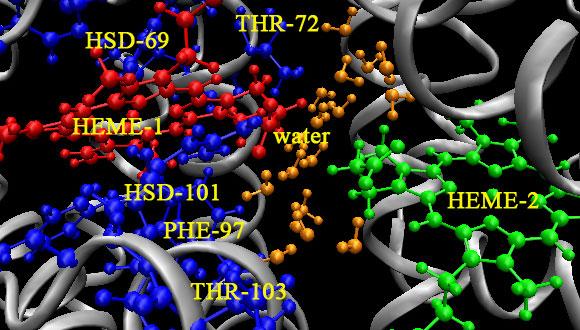סמינר בכימיה פיזיקלית: Decoding Enzyme Dynamics: Microsecond Motions and Their Role in Catalysis
Dr. David Scheerer, Department of Chemical & Biological Physics, Weizmann Institute of Science
Zoom: https://tau-ac-il.zoom.us/j/87820055721?pwd=kewAaVRPgfvQXtUuQD41aWPtcLcecQ.1
Abstract:
Many proteins have evolved to exploit motions of domains and subunits to enhance their function. Single-molecule FRET (smFRET) spectroscopy uniquely allows for the direct observation of conformational transitions within biomolecules, as it captures the time-dependence of these changes and reveals how they drive biological processes. My research focuses on the role of microsecond domain motions in enzymatic activity. The enzyme adenylate kinase (AK) is an intriguing example for this relationship; it achieves efficient catalysis through large-scale domain motions that enclose the bound substrates. These movements occur 100 times faster than the catalytic cycle, enabling AK to balance two mutually exclusive processes—substrate reorientation and chemical reaction—for optimal turnover. Understanding this phenomenon allowed us to decode the long-elusive mechanism of AK’s inhibition by its own substrate and clarify its paradoxical activity enhancement by the denaturant urea.
Despite their high rate, domain motions are tightly coupled to enzymatic activity, as demonstrated also in the case of a second enzyme, phosphoglycerate kinase (PGK). Using multiple FRET pairs that span many directions within the protein, we found that PGK’s motions are more complex than the widely assumed one-dimensional hinge-bending mechanism. Rather than simple open/closed dynamics, PGK adopts three distinct conformations, each varying in domain orientation and intradomain distance and having a specific role in enzymatic activity.
In light of the importance of rapid conformational dynamics, I outline plans to expand this research onto enzymes with high relevance to human health. We will investigate how altered conformational dynamics, for example caused by post-translational modifications, might lead to tumor growth. This work aims to not only uncover general principles that link domain motions to protein function, but also advance our understanding of these enzymes’ roles in cancer progression and as therapeutic targets.
מארגן הסמינר: ד"ר ברק הירשברג


